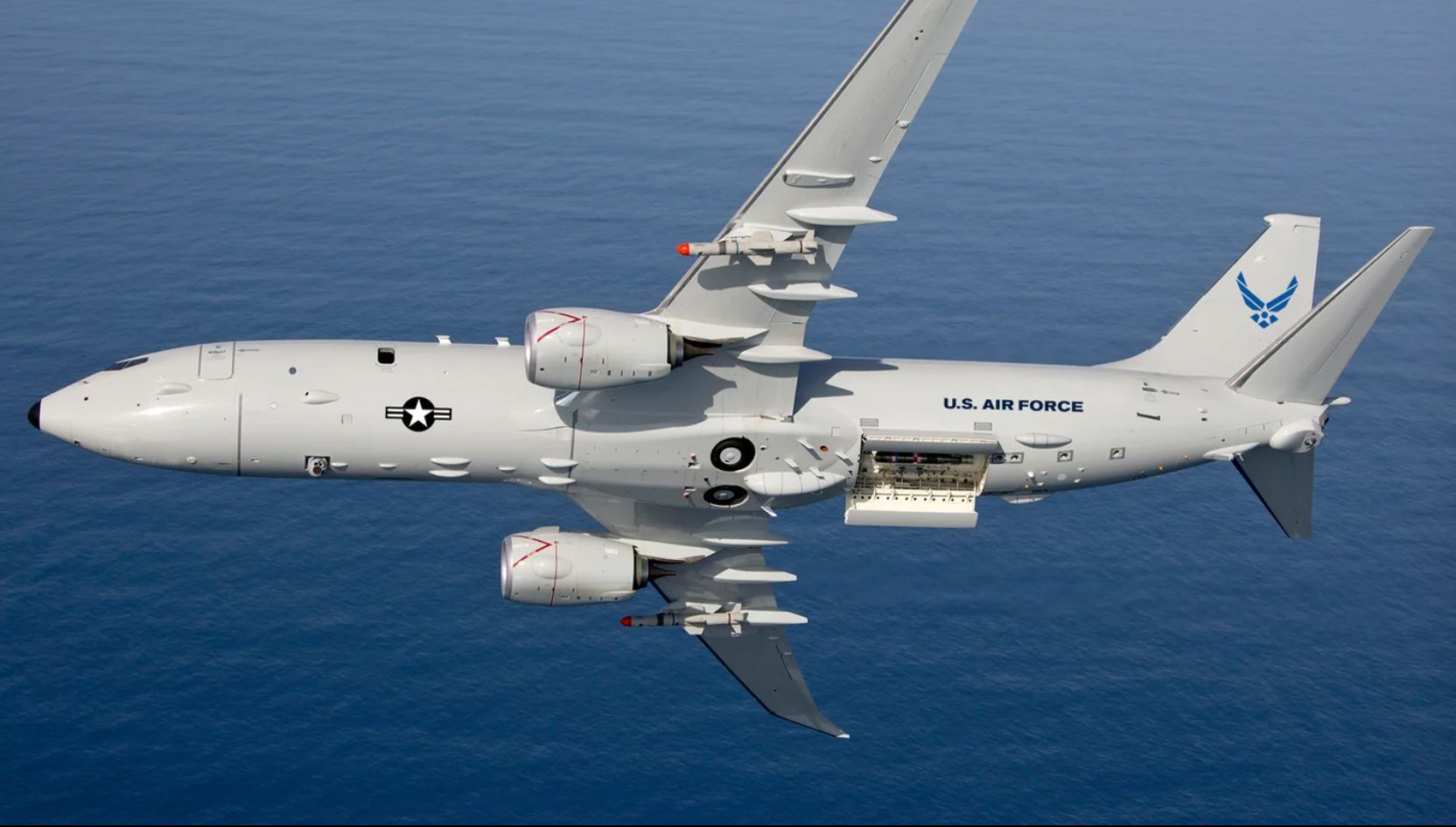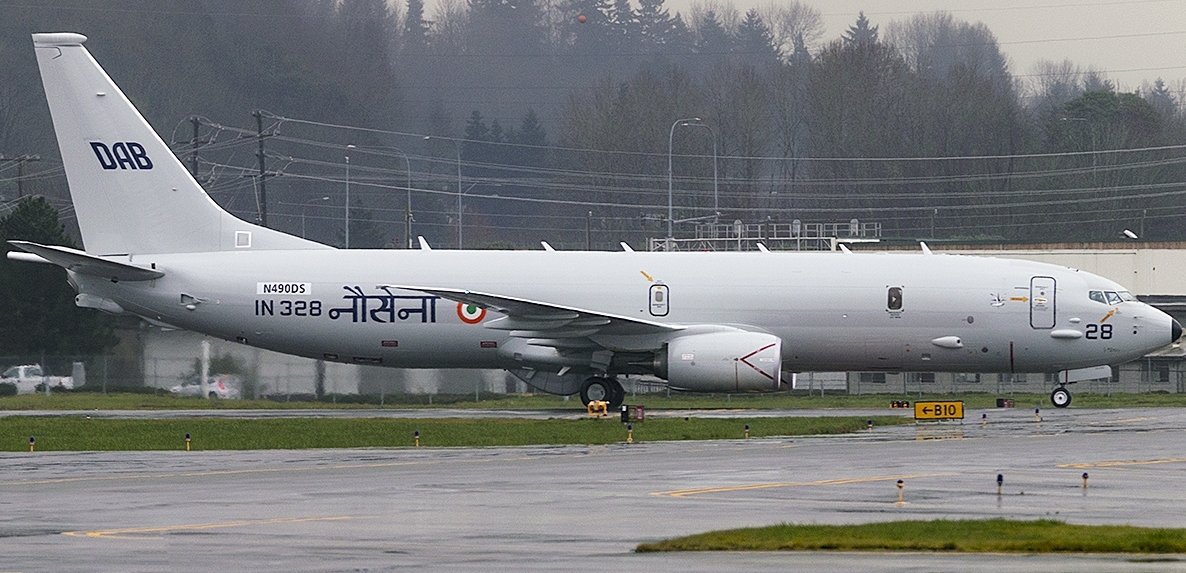South Korea has joined the exclusive group of countries utilizing the powerful P-8 Poseidon, a versatile maritime patrol aircraft celebrated for its prowess in submarine detection and safeguarding open waters.
EXPOSED! China’s Digital Program Using AI & OSINT To Unmask US Navy Warships Revealed In New Report
Conversely, India stands out as the foremost international operator of the P-8 Poseidon fleet, which is an ideal platform for joint operations. It’s imperative to underscore that cooperation between India and South Korea is vital for promoting peace in the Indo-Pacific region.
South Korea recently welcomed its initial batch of P-8A Poseidon maritime surveillance aircraft. Three Boeing P-8A aircraft landed at the Naval Air Command in Pohang, 262 kilometers southeast of Seoul. An additional three P-8A aircraft are expected to arrive on June 30.
The South Korean Navy plans to deploy the P-8A next year after a yearlong period of training and evaluation to assess its operational capabilities. These multi-mission assets are expected to enhance South Korea’s anti-submarine capabilities.
Order History of P-8 Poseidon
The Boeing P-8 is a versatile maritime patrol aircraft excelling in anti-submarine warfare, anti-surface warfare, intelligence, surveillance and reconnaissance, and search and rescue missions. The P-8I can also be used for coastal patrolling.
Boeing Defense, Space & Security developed and produced the P-8 Poseidon, which is derived from the civilian Boeing 737-800 airliner. Initially developed for the United States Navy (USN), there are currently 200 P-8s in service or on contract across nine countries.
In addition to the US and Indian Navy, the Australian Air Force, UK Royal Air Force, Royal Norwegian Air Force, and Royal New Zealand Air Force have integrated this platform into their fleets. The Republic of Korea Navy (South Korea) is also preparing to induct the P-8 Poseidon.
Additionally, the German Navy and the Royal Canadian Air Force have placed orders for the P-8 Poseidon. Germany decided to purchase three additional Boeing-made maritime patrol aircraft last November, increasing its total fleet to eight. These new aircraft are currently under construction.
In November 2023, Canada announced its decision to acquire the P-8A Poseidon to replace its existing CP-140 Auroras. Boeing secured a US$3.4 billion contract to manufacture 14 P-8A Poseidon aircraft for the Royal Canadian Air Force, with the first delivery expected in 2026.
Last year, Boeing and CAE signed teaming agreements to enhance their collaboration on multi-mission platforms in Canada, Germany, and Norway. These agreements aim to leverage the complementary strengths of both companies to deliver management, technical, and cost-effective training solutions for the P-8A Poseidon program, according to Boeing.
P-8I: India’s Formidable Fleet
For Boeing, the Indian Navy was the first and remains the largest international customer for the P-8. India is the second-largest operator of these aircraft outside the United States.
The 12 P-8Is in the Indian Navy’s arsenal significantly contribute to its capacity to keep the vast Indo-Pacific under surveillance and enhance regional maritime security.
Armed with Harpoon Block-II missiles, MK-54 lightweight torpedoes, rockets, and depth charges, these sensor and radar-packed aircraft serve as the country’s ‘intelligent hawk eyes’ over the increasingly militarized Indian Ocean Region (IOR).
With a maximum speed of 907 km/h and an operating range of over 1,200 nautical miles, the P-8Is can detect and neutralize threats far before they approach Indian shores.
According to Boing, the Indian Navy’s P-8I fleet has surpassed 35,000 flight hours since its induction and plays a crucial role in surveillance, reconnaissance, disaster relief, and humanitarian missions.
The P-8 has two variants: the P-8I, used by the Indian Navy, and the P-8A. All other operator countries use the P-8A Poseidon variant. Boeing has maintained a strong presence in India for over 75 years, achieving numerous milestones. Boeing provides spares, ground support equipment, and field service representatives at INS Rajali and INS Hansa.
Additionally, Boeing has built a 60,000 sq. ft. Training Support & Data Handling (TSDH) Centre at INS Rajali, Arakkonam in Tamil Nadu, as part of a training and support package contract signed in 2019. A secondary center at the Naval Institute of Aeronautical Technology, Kochi, was handed over to the Indian Navy in 2022.

China’s Naval Expansion In The Indian Ocean
China’s expanding naval presence in the Indian Ocean is raising significant concerns for Indo-Pacific security, particularly for India. The aggressive stance and growing capabilities of China’s navy in this region have heightened regional tensions.
Chinese research and survey vessels are actively engaged in ocean mapping operations around the 90-degree ridge area, a strategic move following the naming of 19 seabed features in the Indian Ocean with Mandarin names. These activities are seen as preparation for future submarine operations, bolstering China’s capabilities for potential incursions into the Indo-Pacific.
Adding to India’s concerns, in April 2024, China launched the Hangor Class—Type 039B submarine for the Pakistani Navy. This launch is part of a larger deal in which Pakistan has commissioned eight submarines from China valued at $5 billion. These submarines are export variants of the Chinese People’s Liberation Army Navy’s Type 039A/041 Yuan-class submarines.
Defense experts warn that the Indian Navy faces a significant underwater threat in the coming years. The most effective strategy for countering these submarines involves using maritime patrol aircraft like the P-8I, along with ship-borne anti-submarine warfare (ASW) helicopters. This combination greatly enhances a warship’s ability to detect and engage underwater targets.
Maritime patrol aircraft such as the P-8I can swiftly cover large areas of the ocean using sonobuoy patterns to locate suspected submarines and direct other forces to engage. This capability is crucial, as surface warships and even submarines often struggle to reliably track and maintain contact with modern submarines over vast ocean expanses.
Mid-Air Refueling Challenge
However, there is a concern regarding the P-8 Poseidon maritime patrol aircraft’s need for mid-air refueling.
India currently operates six Russian Ilyushin-78 tankers, inducted in 2003, but these face maintenance and serviceability issues. Moreover, the Ilyushin IL-78 tankers cannot refuel the P-8I due to their probe and drogue refueling system.

To address this issue, in February 2024, India approved key proposals worth Rs. 84,560 crore to enhance military operational readiness, including the purchase of additional mid-air refuelers. While the tanker program is under the ‘Buy Global’ category, allowing for foreign procurement, it also permits the acquisition of pre-owned aircraft, suggesting a hybrid approach.
Contenders for refuelers include Airbus with its A330 Multi-Role Tanker Transport (MRTT) and Boeing with its KC-46 Pegasus. However, converting pre-owned passenger aircraft into tankers is a cost-effective alternative. Hindustan Aeronautics Limited (HAL) has an MoU with Israel Aerospace Industries (IAI) to convert Boeing 767 passenger aircraft into Multi-Mission Tanker Transport (MMTT) aircraft in India, which could reduce costs significantly.
Ideal Platform For Collaborative Operations
In July 2023, with a strategic focus on China, the Royal Australian Air Force (RAAF) P-8 maritime patrol aircraft arrived in India to engage in anti-submarine warfare exercises and joint patrolling alongside its Indian counterpart P-8Is in the Eastern Indian Ocean.
Discussing this collaborative endeavor with the EurAsian Times, retired naval aviator and Vice Admiral Shekhar Sinha highlighted, “In addition to an intelligence-sharing agreement, it allows two aircraft to exchange the positions of vessels in their own areas of operation and feed into a larger maritime domain awareness (MDA) network. Because of interoperability, it becomes easier to do reconnaissance in a much larger area, even without each aircraft having to operate in two different areas. It gives the force commanders a much larger picture in the MDA”.
Experts emphasize that the presence of Chinese submarines in the Indian Ocean Region (IOR) remains a primary concern for India, underscoring the importance of cooperation with other nations to bolster underwater domain awareness in the region.
India – South Korea Cooperation In Indo-Pacific
India’s External Affairs Minister Dr. S. Jaishankar’s visit to South Korea in March 2024 highlights the critical role of Indo-Korean cooperation in ensuring peace and stability across the Indo-Pacific region.
Amid the intricate challenges stemming from regional dynamics, such as the breakdown of peace efforts between the two Koreas and China’s assertive actions in the South China Sea and the Bay of Bengal, India and South Korea stand out as pivotal partners. Their cooperation holds the potential to effectively tackle these challenges.
In conclusion, as nations grapple with the ever-evolving challenges of maritime security, the P-8 Poseidon has emerged as a formidable force, providing solutions to various countries in their pursuit of safeguarding vital interests across the high seas.
- Shubhangi Palve is a defense and aerospace journalist. Before joining the EurAsian Times, she worked for E.T. Prime. In this capacity, she focused on covering defense strategies and the defense sector from a financial perspective. She offers over 15 years of extensive experience in the media industry, spanning print, electronic, and online domains.
- Contact the author at shubhapalve (at) gmail (dot) com.




